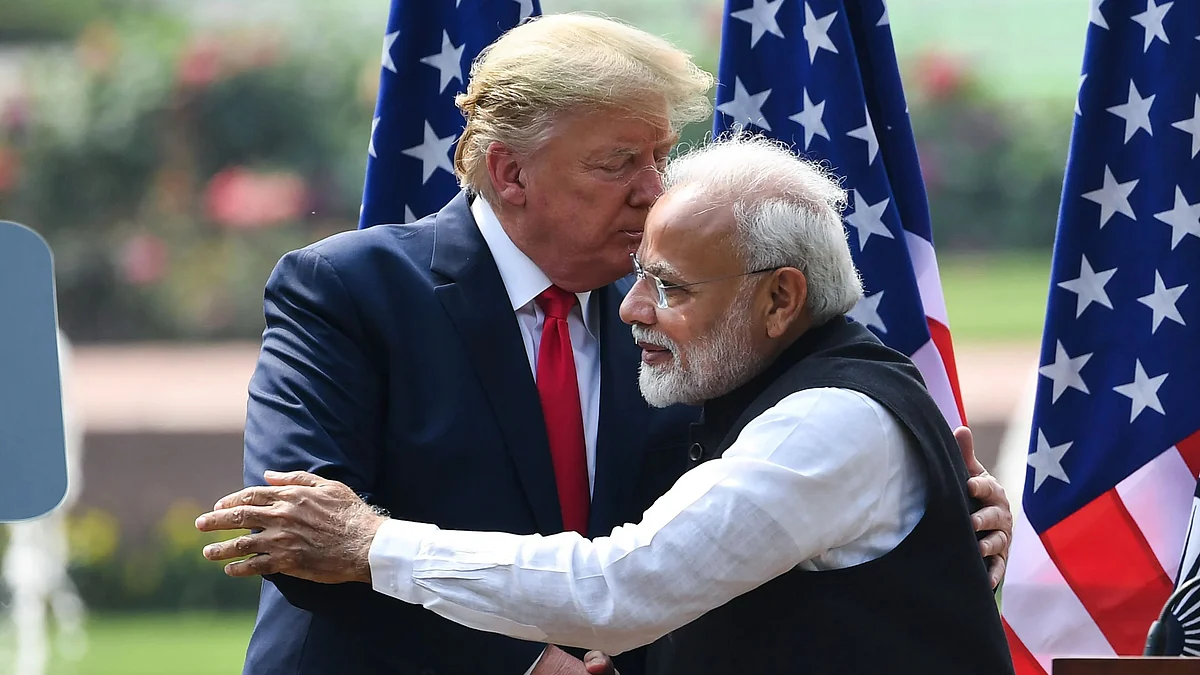Cloth partitions hiding evidence of poverty are not new – they were seen as far back as January 1978, when President Jimmy Carter became the fourth US President to visit India. He landed in Delhi and was there for a couple of days. The Janata Party under Mr Morarji Desai was in power. To ensure that the right picture was presented, the Government had evicted all beggars from the streets that would be traversed in these three days; and all signs of poverty were covered with the erection of white cloth barricades. This was the time when India would be called an underdeveloped country because we were still eligible for loans from the International Development Association, which gave loans to poor countries for long tenures at less than 1% interest.
Fast forward almost 45 years where India is a dominant economic power which has just hosted the G-20 Summit. It is a repeat of what one saw in Delhi. As Mumbai is a not too nice-looking city with slums everywhere and people still defecating on the roads (though not to the extent that Naipaul had overemphasised in his description of a wounded civilisation), the Government has painted the road dividers, put up lights along all roads that the delegates would travel; and put up the cloth partitions to ensure that the true India cannot be seen. Some may call this typical of a Potemkin state where there is a distinct ambivalent picture. For one who resides in Mumbai, the irony will not be lost when one views the rather long Andheri flyover, which was illuminated for festivity but houses hundreds of beggars permanently below the unintended shelter.
The approach of hiding the true state of the city and country is now a habit. The country has made great progress in terms of constructing highways at breakneck speed. But city roads continue to be plagued by continuous digging, leading to potholes that are never filled. There are fantastic malls which have come up even in Tier 2 cities but getting to these structures takes a lot of time due to the congestion. The picture outside these places is similar — beggars straddling the entrances and exits hoping to make money. This scene cannot be missed even at traffic signals. The reason for the picture remaining the same is not hard to guess. The growth process in India has been lopsided, being focused on the top echelon. In the true capitalist spirit a lot of reliance has been placed on the trickle-down approach. This was especially true after 1991 when we went in for free markets reforms. This has made India a globally comparable economy when it comes to width and quality of manufacturing and services, but scant regard has been paid to the bottom of the pyramid. The World Inequality Report states that the bottom 50% of population owns 13.1% of income and 5.9% of wealth while the numbers for the top 10% is 57.1% and 64.6% respectively. The numbers say it all.
The trickle-down process has worked, albeit slowly. This is why we observe that even when it comes to begging, which is a flourishing business in metropolitan cities, it is typified by the beggar community owning mobile phones but having no house and probably unsure of a meal. The situation is more distressing when one moves to the interiors. The reaction of the Government has been to indulge quite aggressively in terms of providing cash transfers and cheap/free food, through a variety of programmes. While this is commendable, the broader challenge is to ensure that they have a sustainable income going forward. Having PM Kisan, PM-GKAY, NREGA etc. are good fillers but cannot be made permanent. Even the West is lamenting the liberal dole system which provides incentives for remaining unemployed. The problem is that not enough jobs have been created.
We also have a distinct economic transformation which has seen the economy moving from agriculture to services, without having an industrial revolution as such. This is a major slippage because industry creates jobs that are sustainable. Also, while the composition of GDP has changed — services dominating with a share of 65% — agriculture still accounts for 60% of the workforce. This lopsidedness has resulted in the dualistic structure of the economy. Agriculture has witnessed limited improvement in productivity but is the epitome of disguised unemployment. There have been pressures to ensure that commercialisation is thwarted at all stages (remember the farm laws which aim to give power to the farmers). Jobs that are created in the services sector are not quite of the skilled variety. The boom in retail and hospitality sectors has created a large workforce that is involved in lowpaying jobs like delivery agents or service staff in the commercial complexes. Construction is another large employer, but the employment provided is temporary and involves relatively low wages.
This leads to the larger issue of employment linked with education. Today, whether one likes it or not, an English education is essential for anyone who hopes to enter the corporate world and earn better. This is something that is left out in the New Education Policy which has made it mandatory to have preliminary education in the mother tongue. Culturally it is good, but practically those who do not have an English education find it more difficult to get into professional colleges where competition is intense.
It may be time to introspect quite seriously on all these issues when policies are framed, so that there is a synchronised growth process which is more inclusive.
Madan Sabnavis is Chief Economist, Bank of Baroda, and author of ‘Lockdown or economic destruction?’
Views are personal










